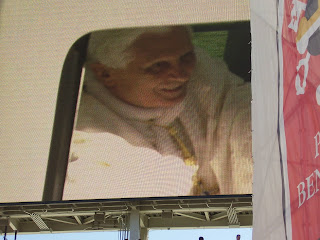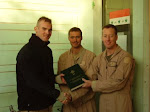Naples: Beautiful and Blessed
The art and architecture of Naples are stupendous. The people of this city are also blessed with fresh food from the sea and the land. And the family remains a revered point of reference for the human person.
Thousands of years of history have bestowed upon the people of this city an unparalleled culture. But at the core of every culture there must be found "cult", or worship of God, or a people stands at risk of losing their soul.
In every age the faith must be handed down through the family of faith in the Church and the domestic church of the family so that culture will remain a powerful force for the uplifting of the human person in work, at school, in the home. In every task, love of God and neighbor gives the highest meaning to the endeavor and bestows lasting value because it remains open to eternal life.

Napoli's piazzas are elegant and always throb with life. Naples is one of the few major Italian cities remaining where you can hear Italian spoken almost everywhere and experience the turbulence and beautiful chaos of a real working Italian metropolis. On the left is the royal palace which houses the San Carlo opera house and on the right is visible the elegant coffee house "Gambrinus". Between them, the Piazza del Plebescito with the pillars and entrance of the Church of San Paulus, crafted as Naples' version of the Pantheon.

Raffaele enjoys dinner time with the help of his proud "mamma" Monica.

Naples proudly proclaims herself the birthplace of pizza and the denizens of the city enjoy loading up with a great variety of unorthodox toppings. Here, frankfurters and fries.

"La Famiglia", still revered in Naples as the heart of human life.

Naples sports her own miniature version of Saint Peter's, Madonna del Buon Consiglio, Our Lady of Good Counsel, on the hill of Capodimonte.

Still lifes, or "presepi" are intricate and detailed. Most famous are the Christmas scenes made from terra cotta, hand-painted and clothed with real vestments.

The purgatory church warns the wayward of the shortness of human life with four bronze skulls topping the pillars before its facade along the central "Spaccanapoli". This alley, which "breaks" the city in two, is built upon an ancient Greek road.

The Gesu church, with its large piazza del Gesu, is one of Naples' largest and houses the remains of a canonized medical doctor, pride of the city and commanding great devotion from the Napoletani.

Street shrines dedicated to Our Lord, the Madonna, Padre Pio and other holy ones witness to Naples' piety but also served a purpose of lighting the alleyways of the city at night to provide safer passage.














































.jpg)
.JPG)
.JPG)















